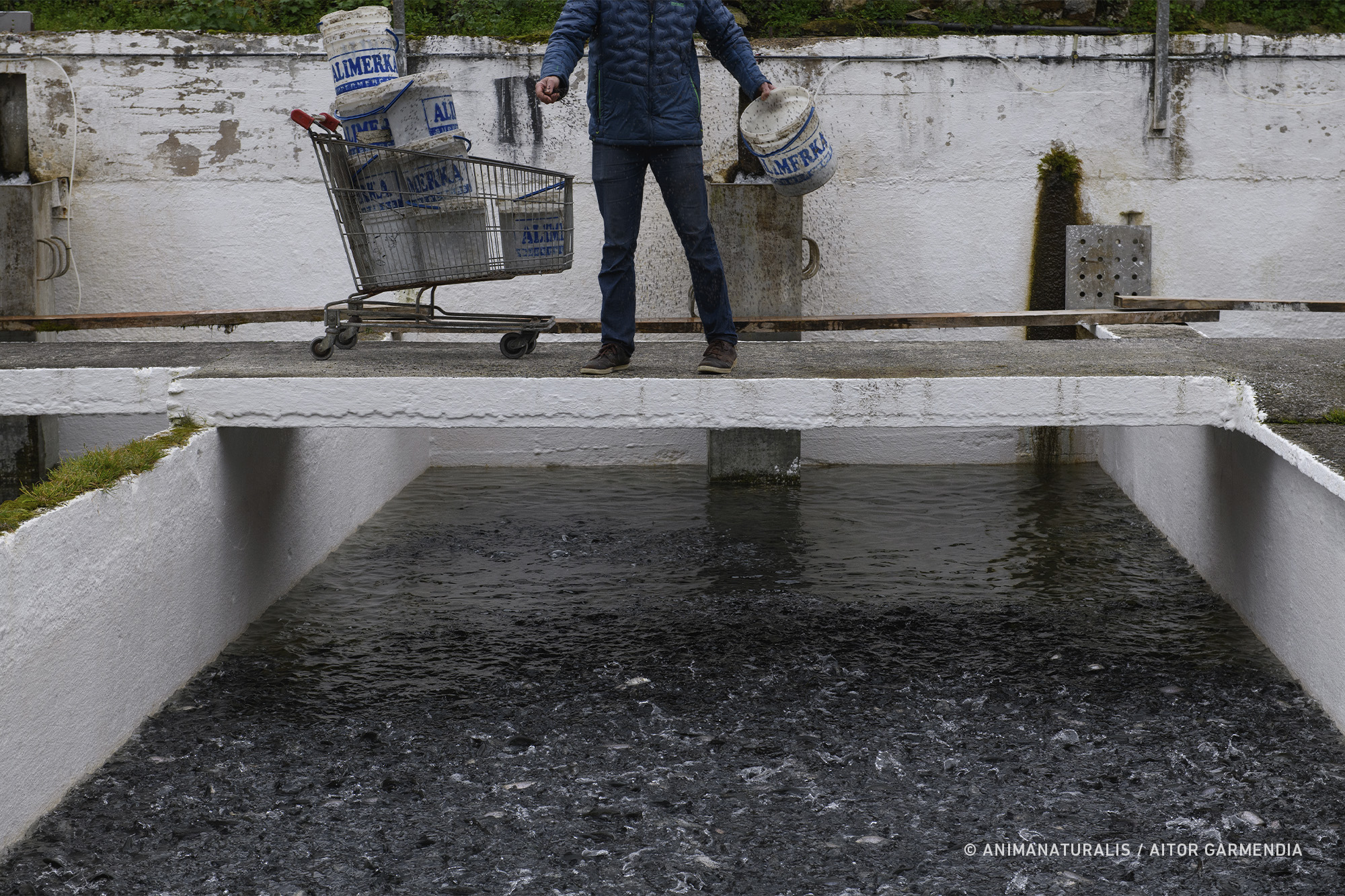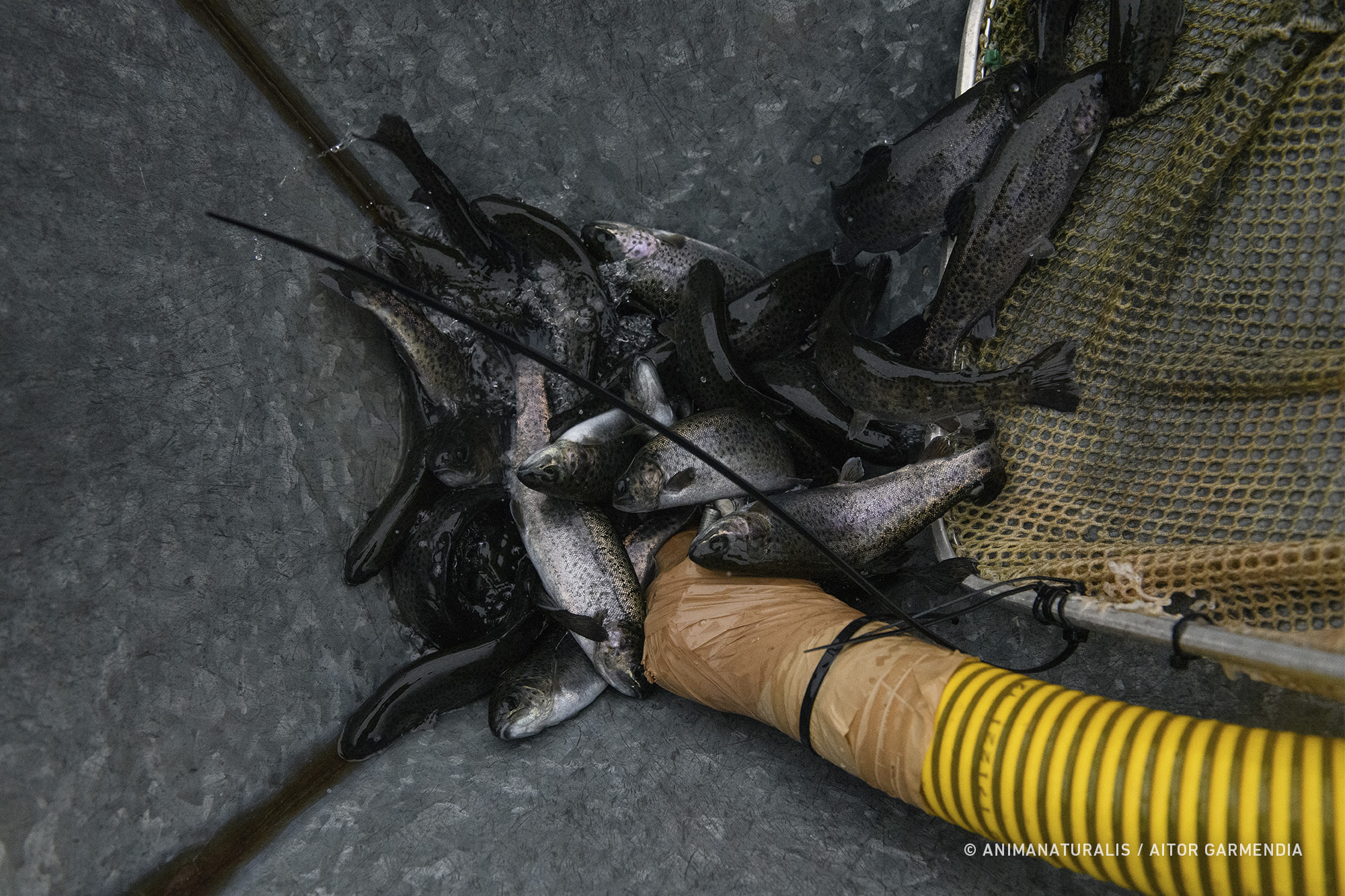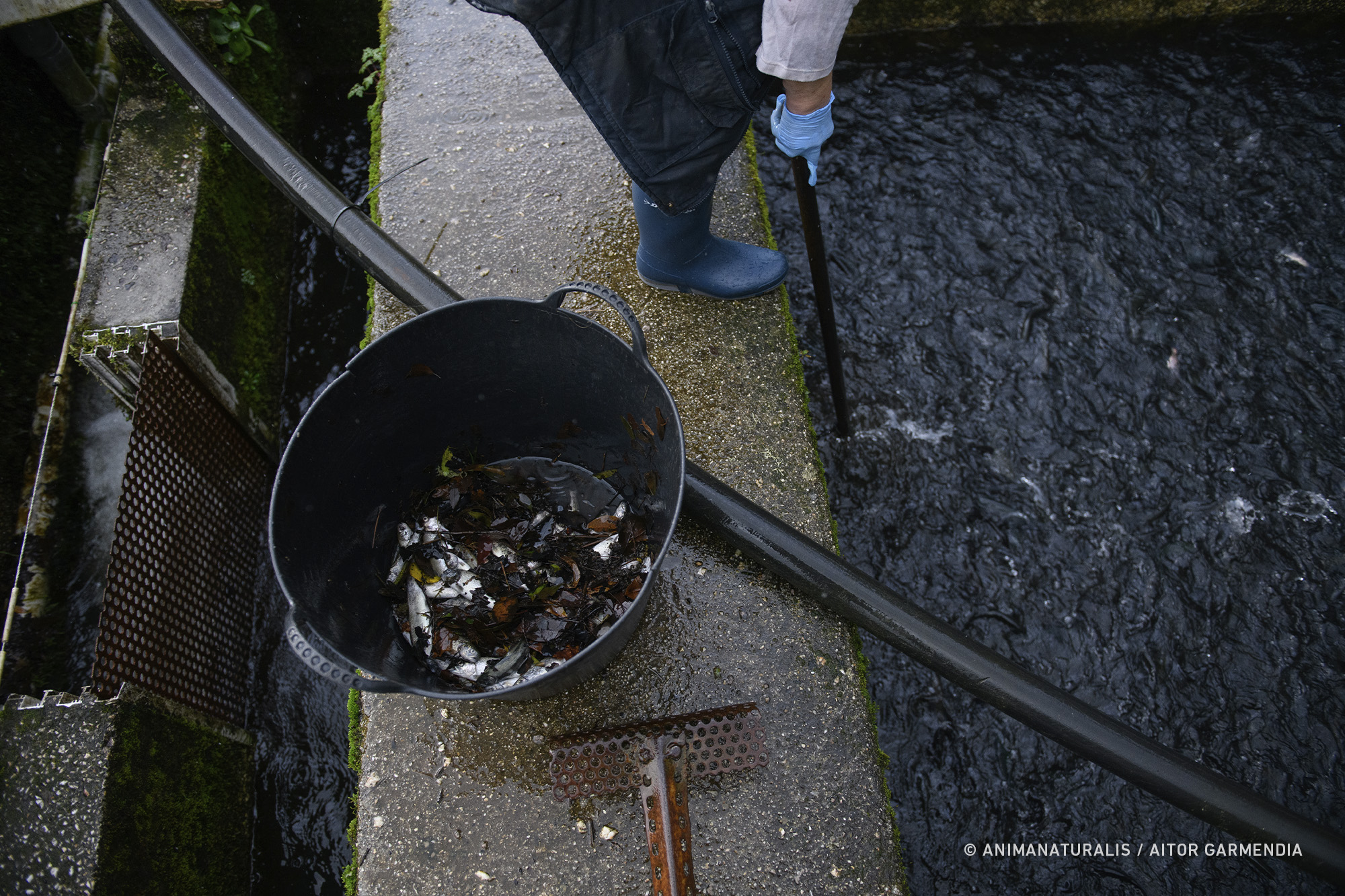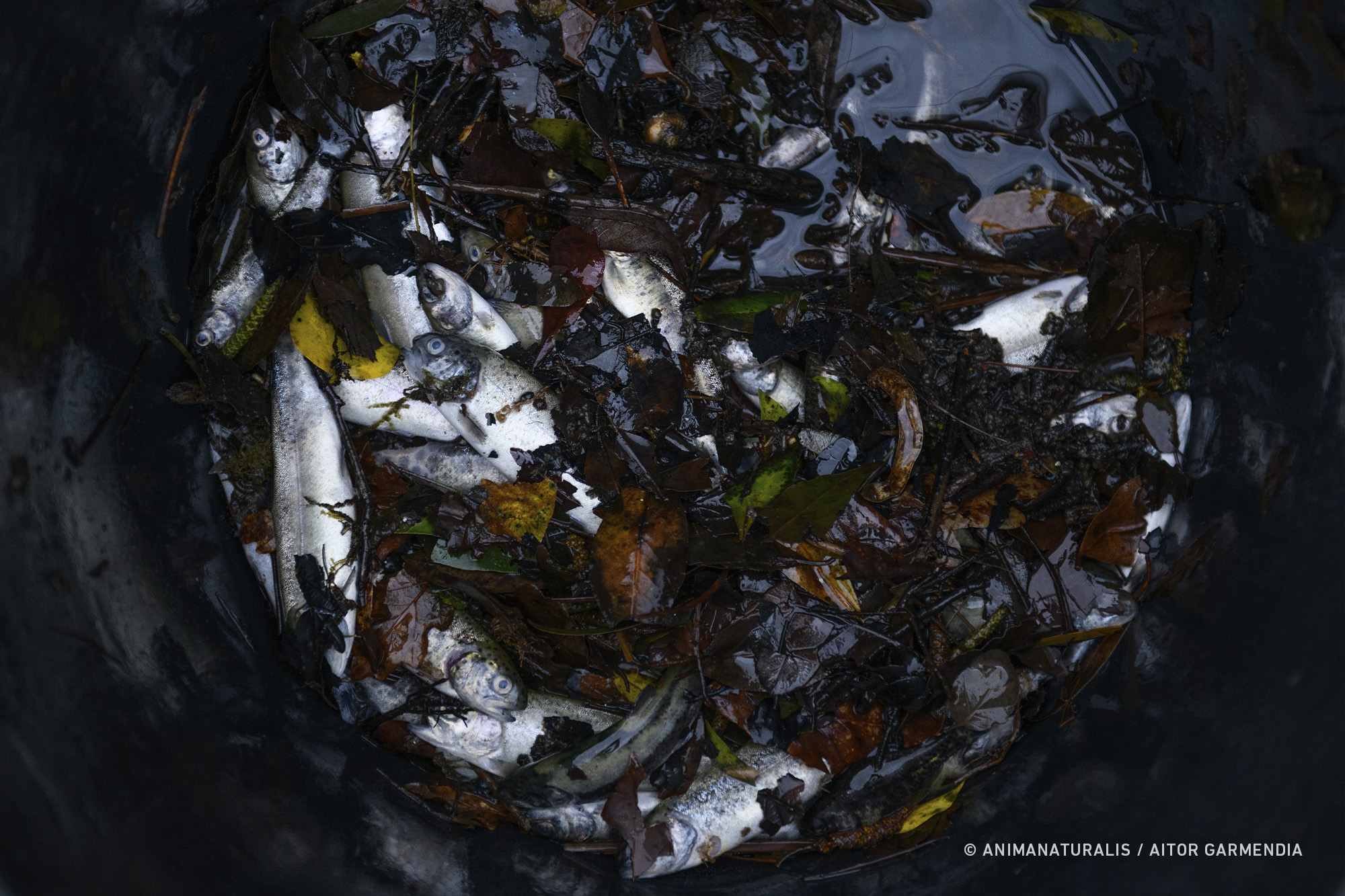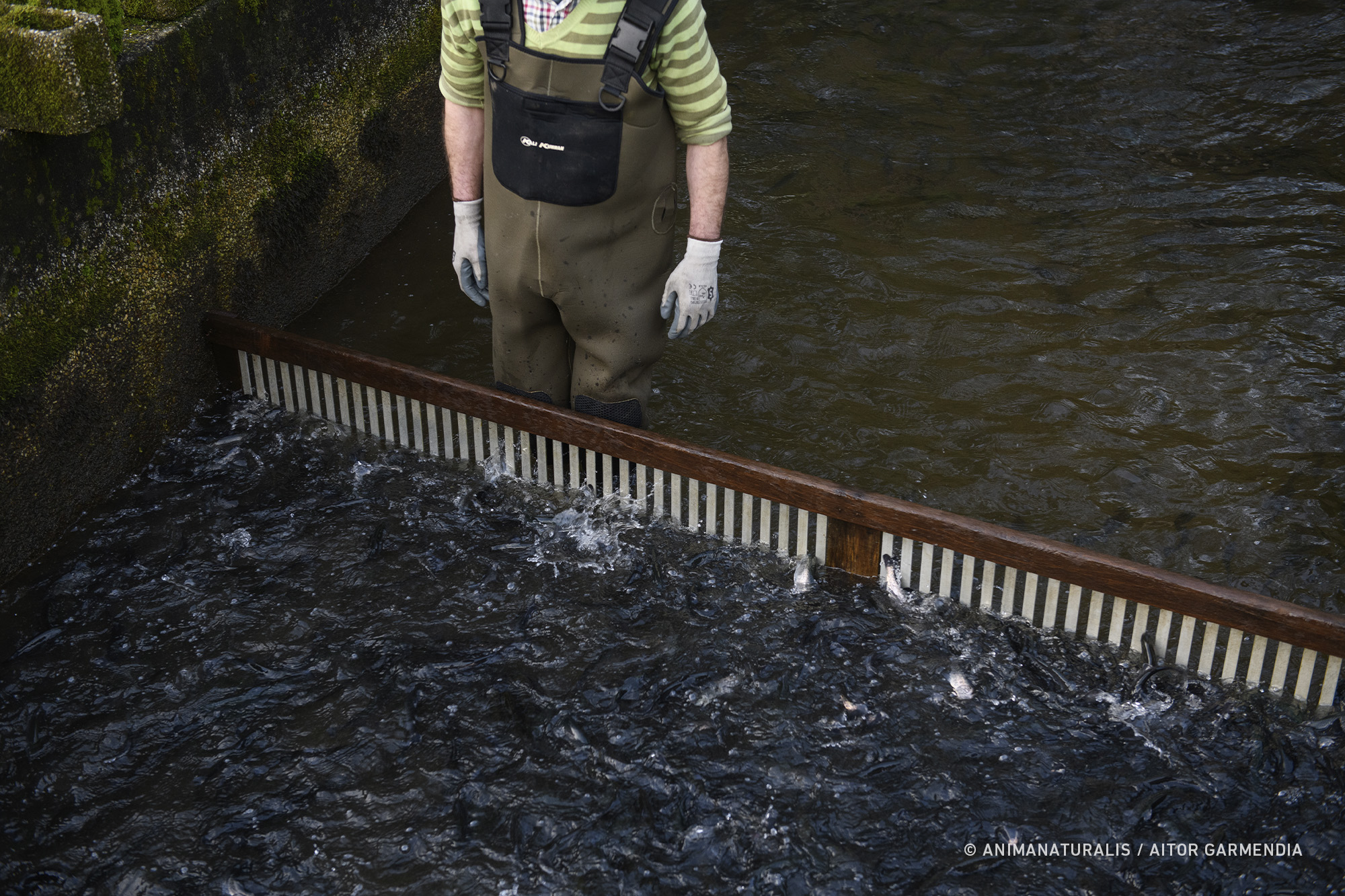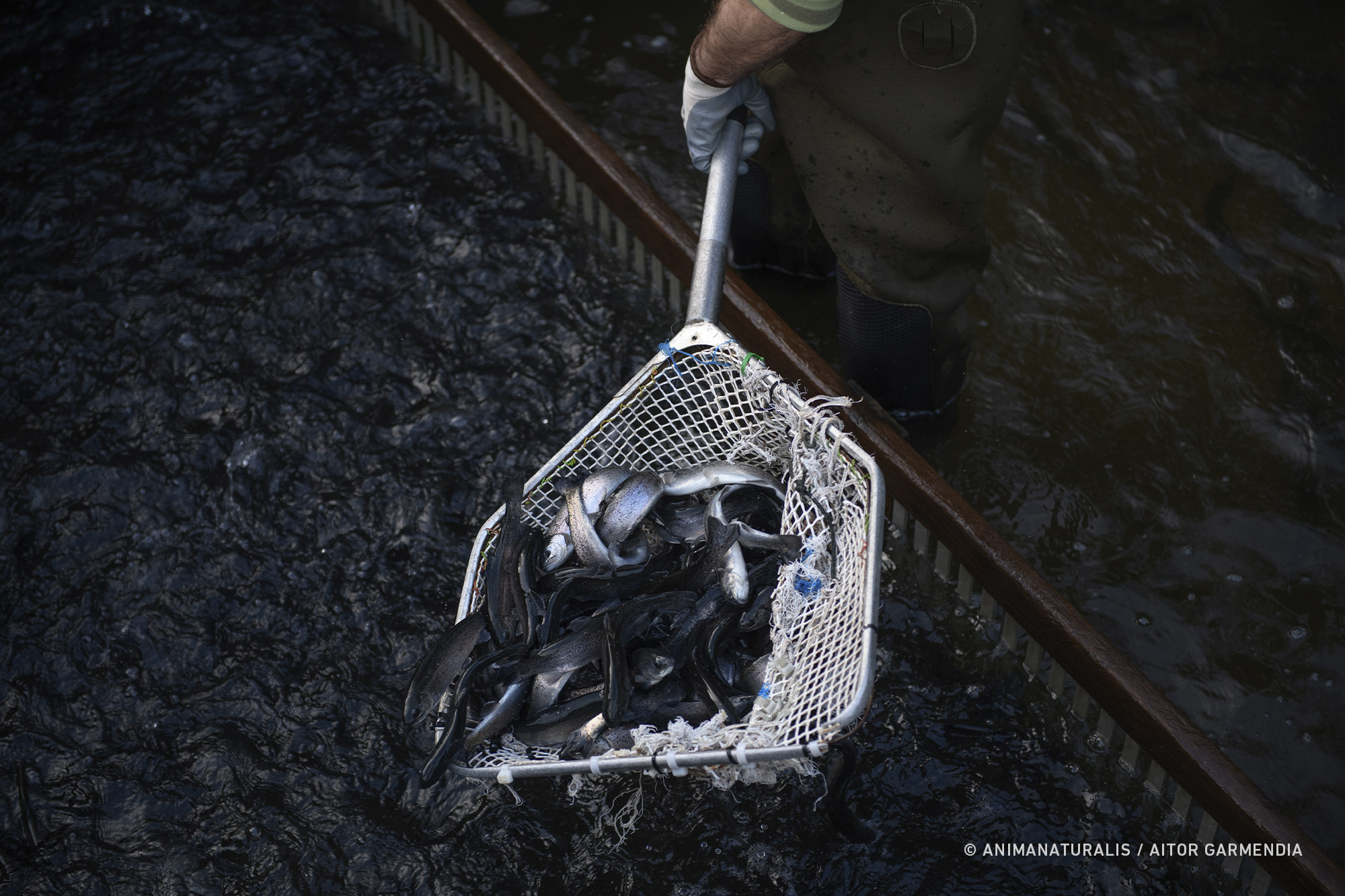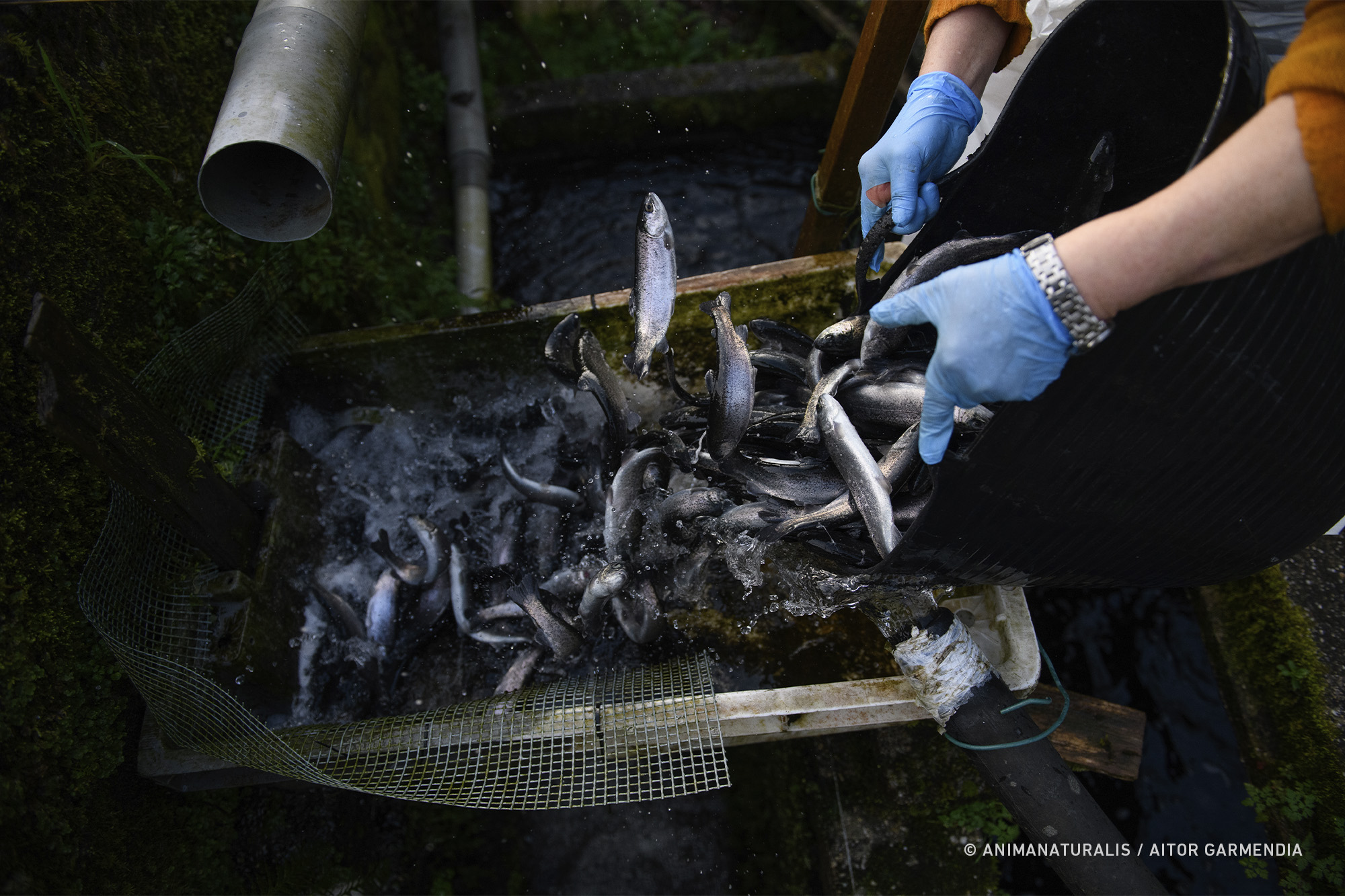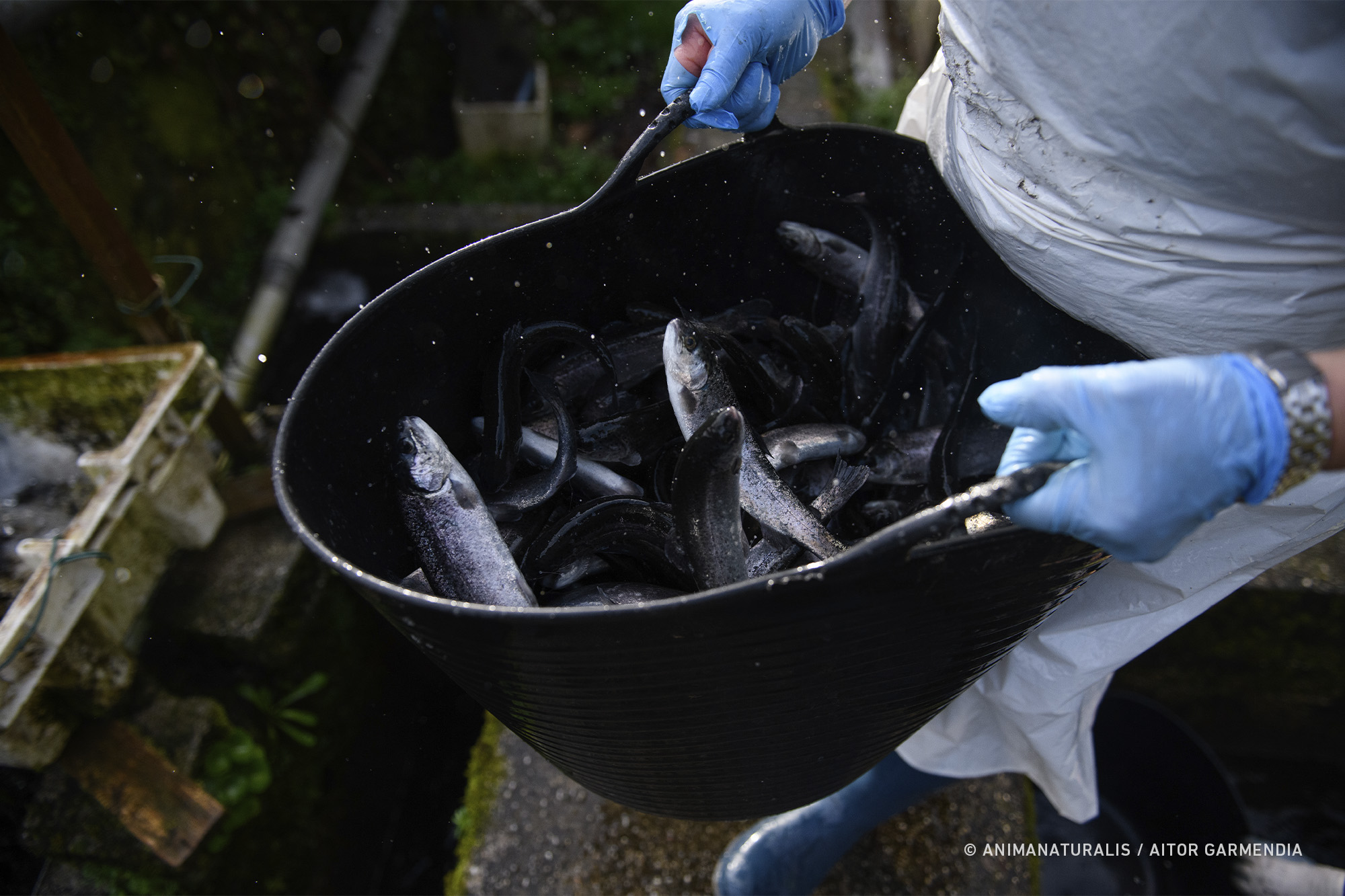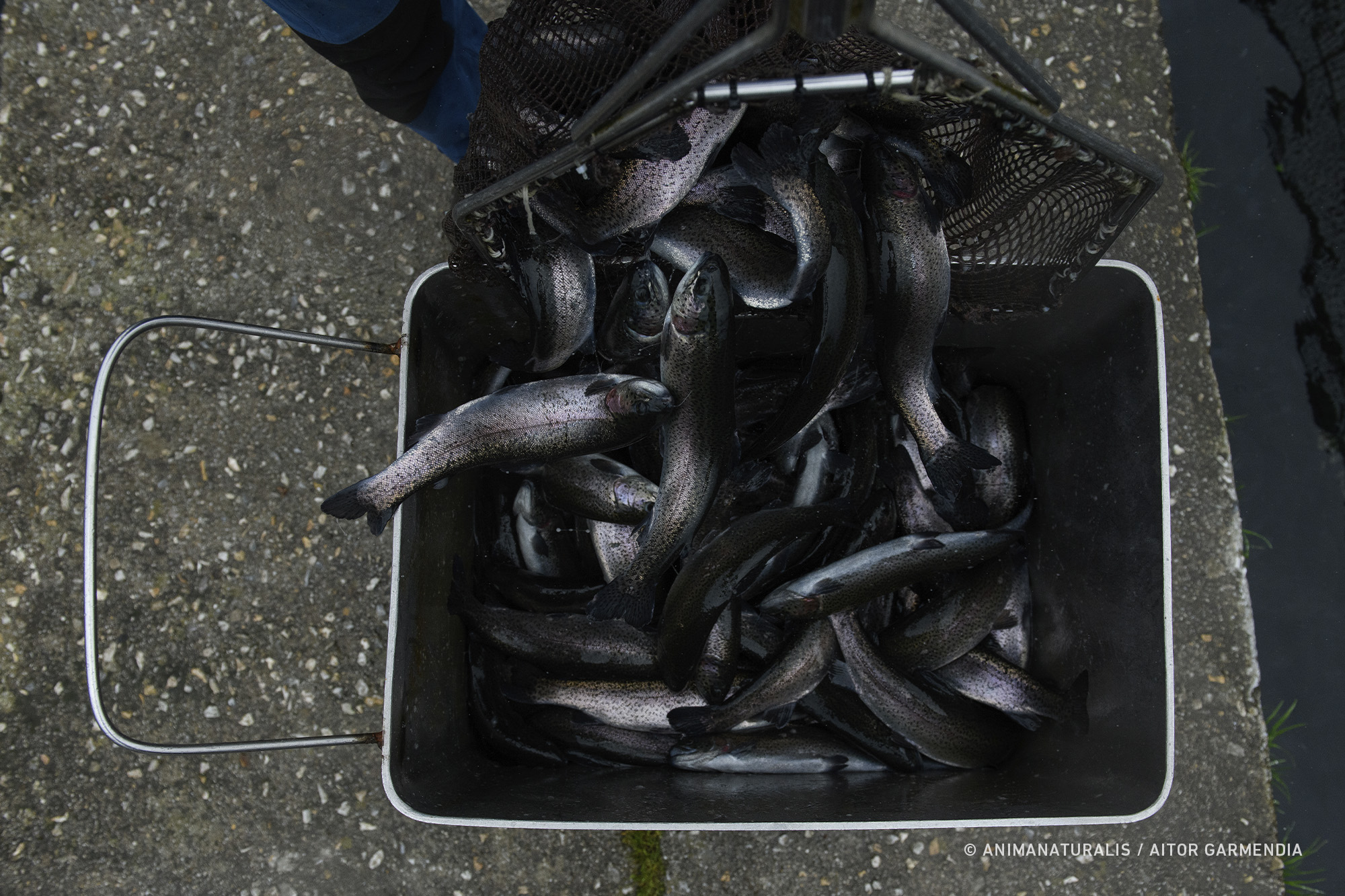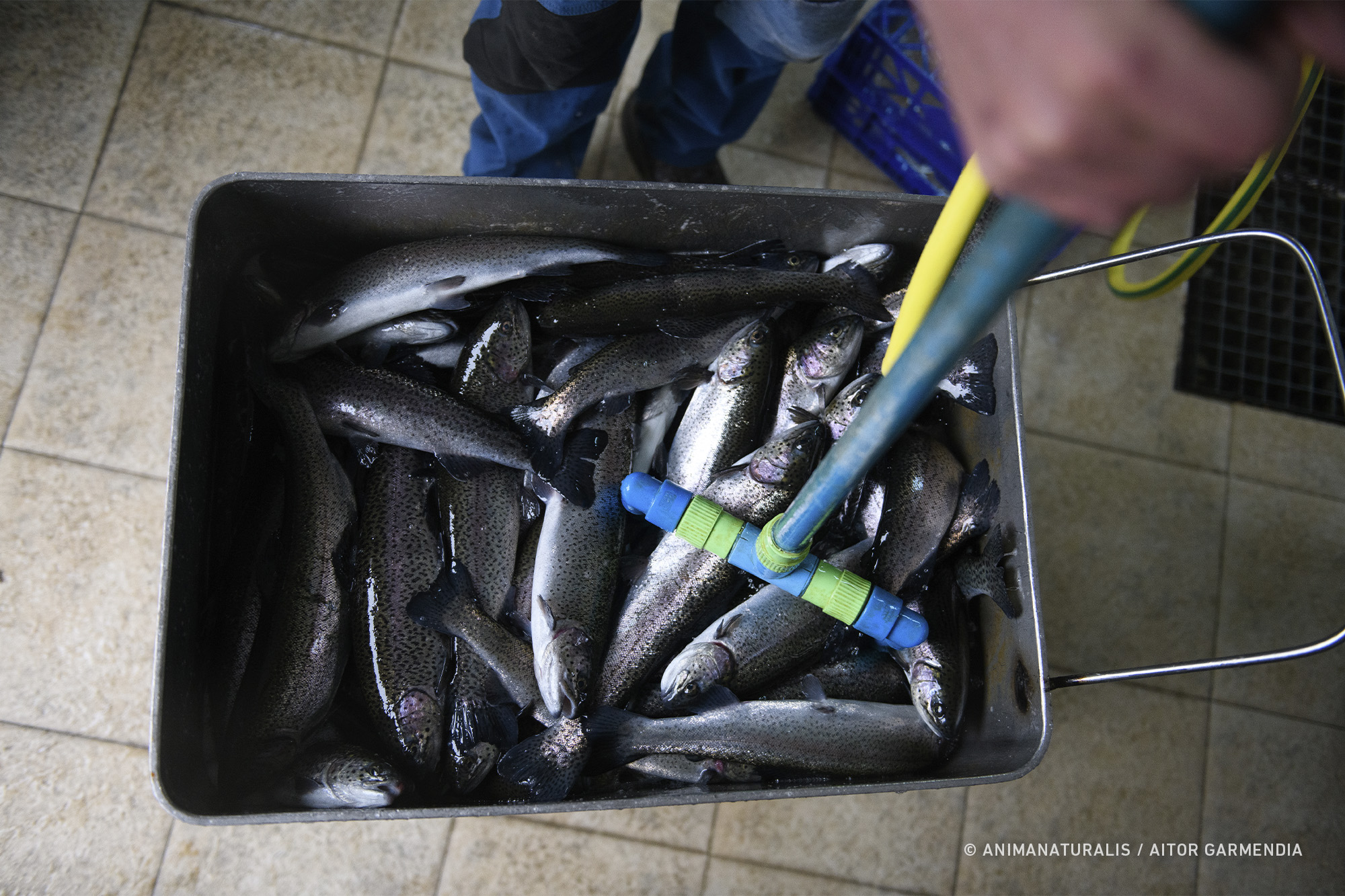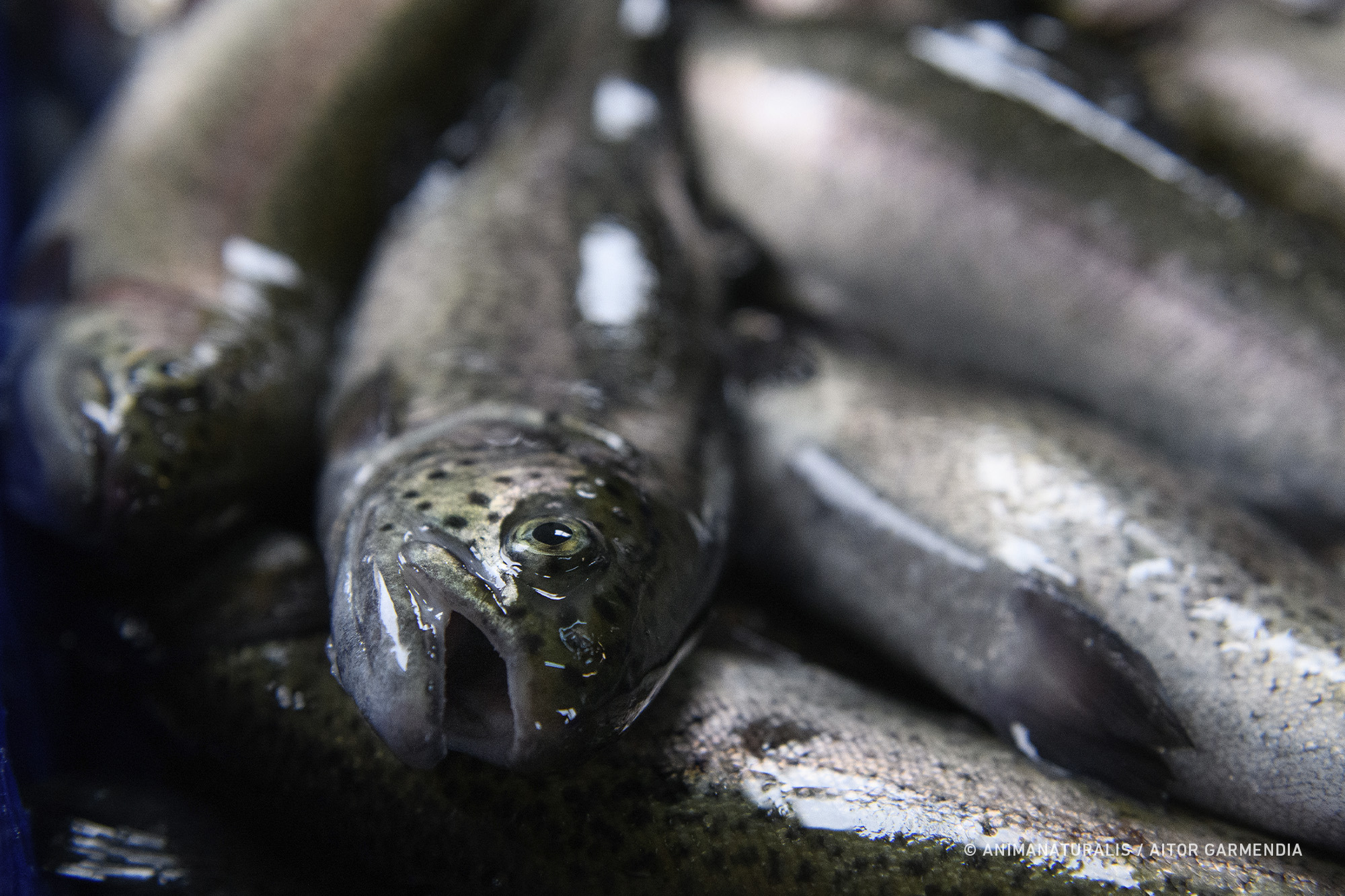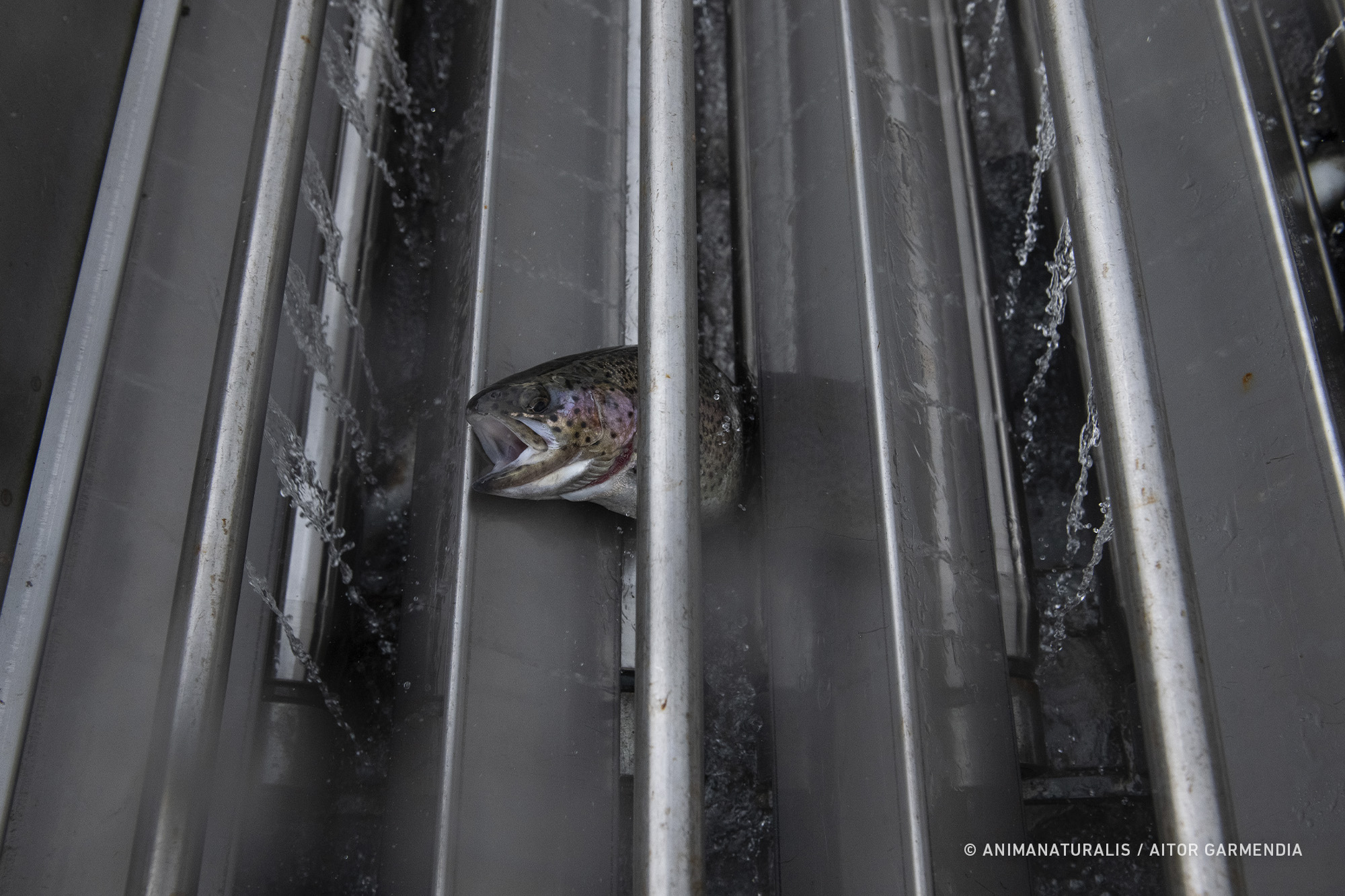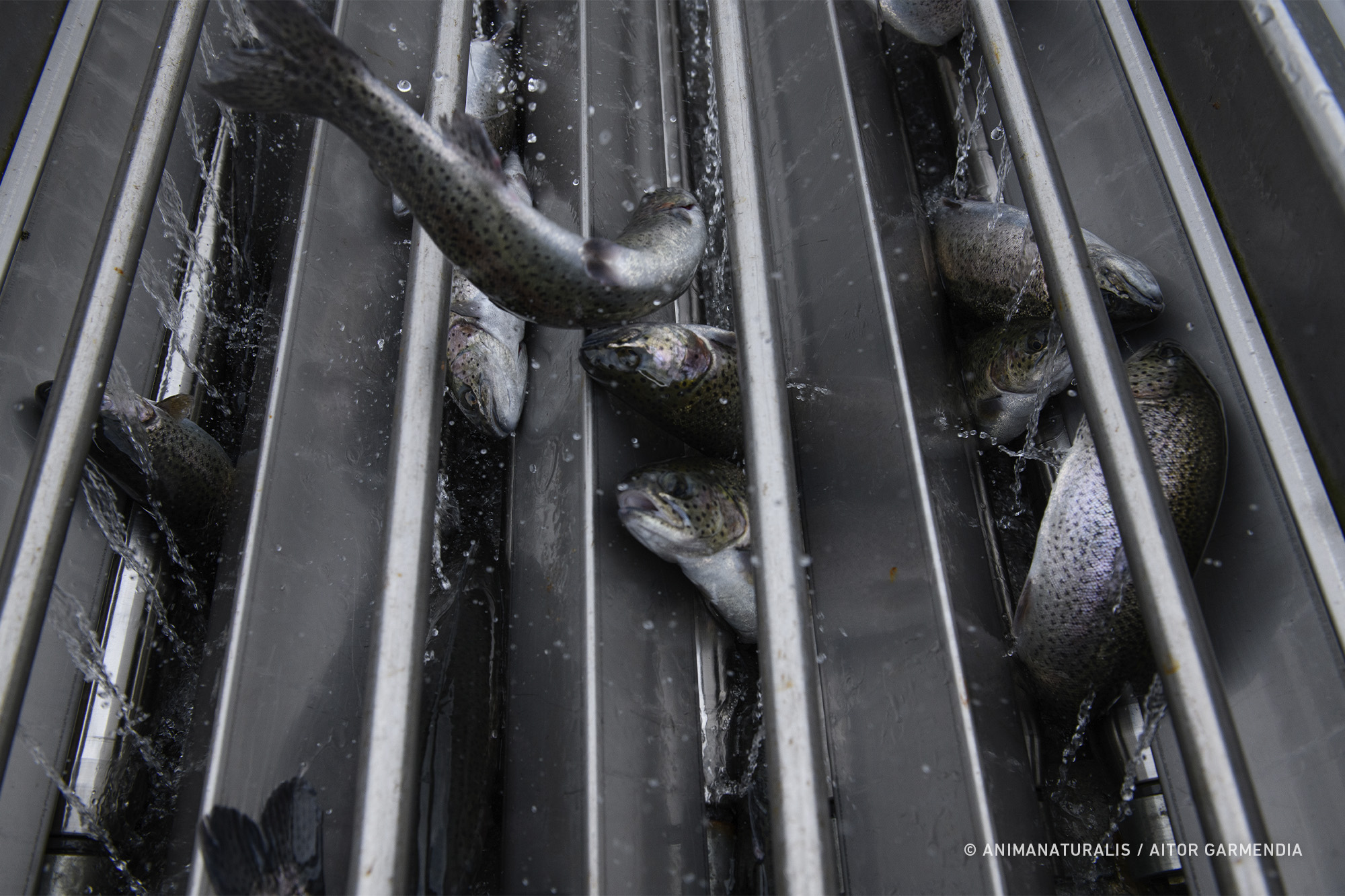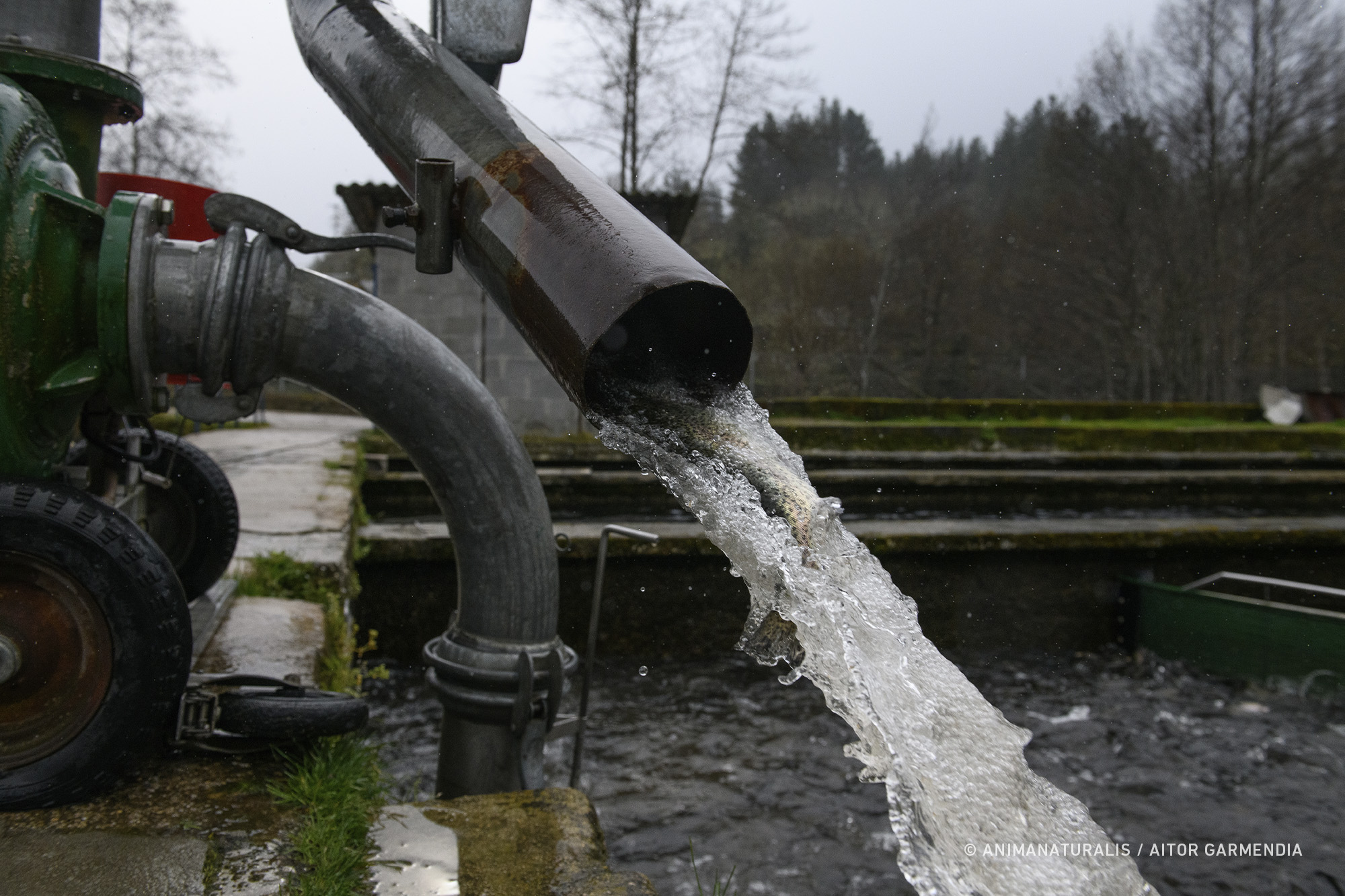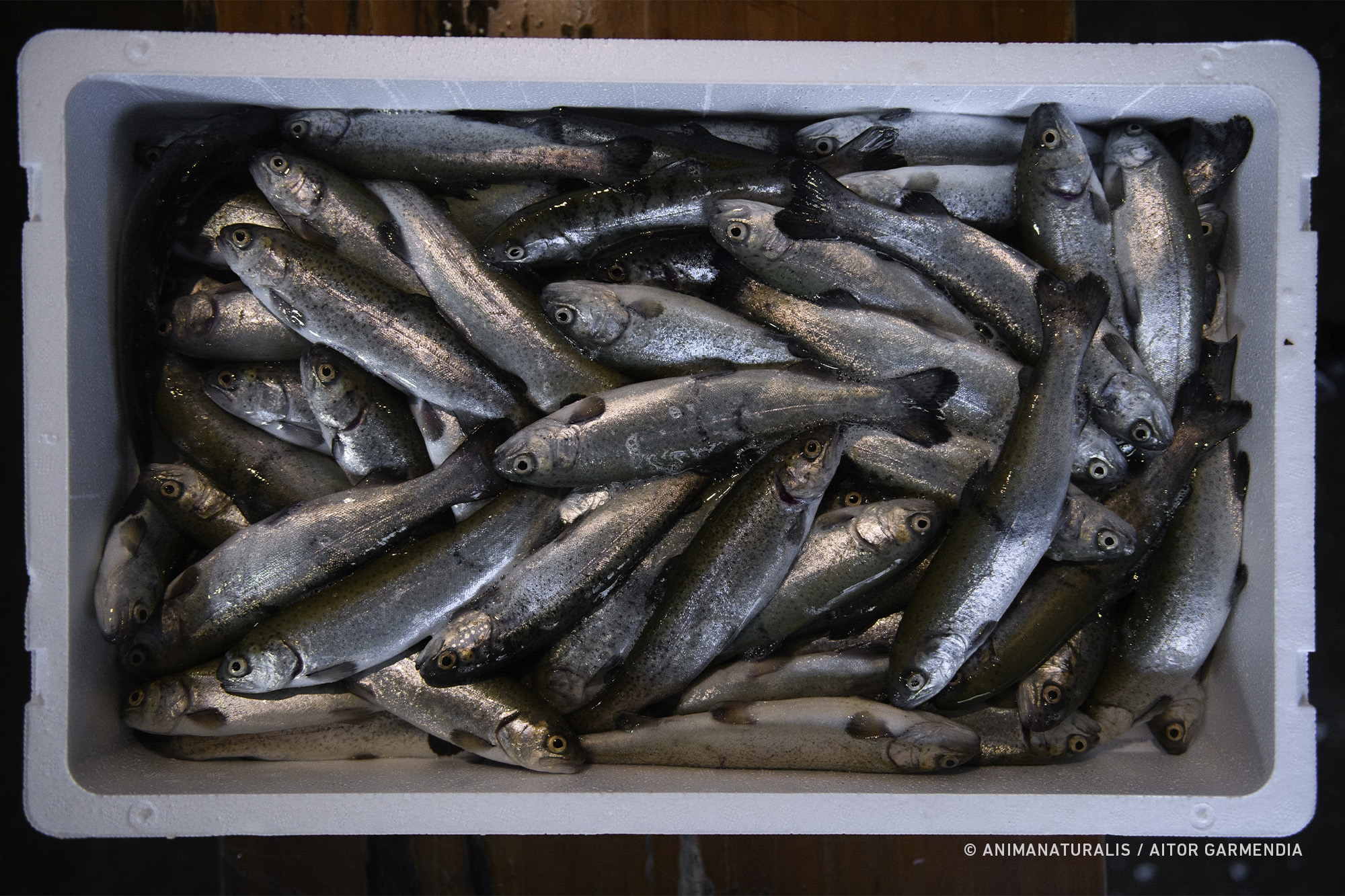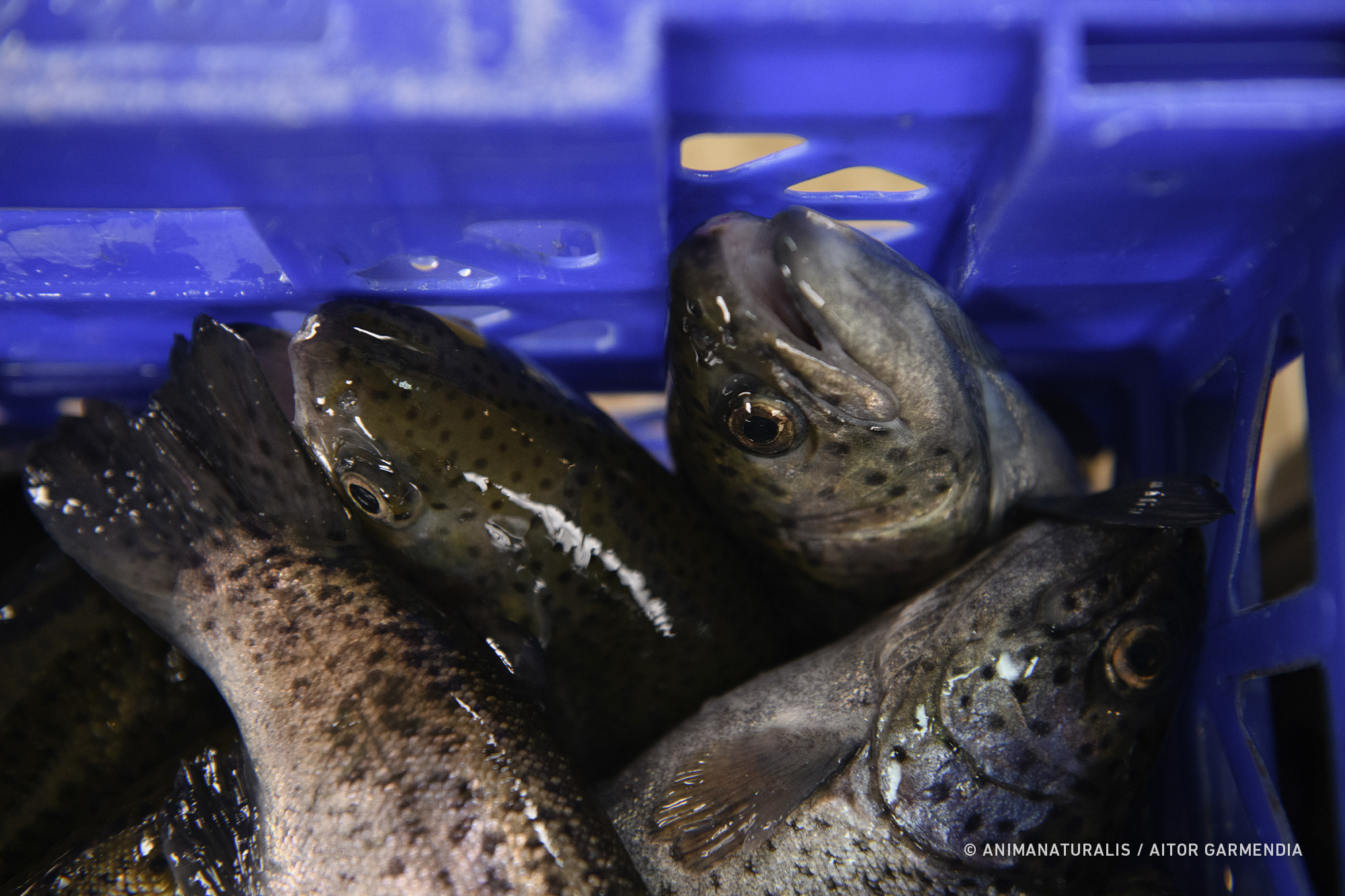Spain is the leading aquaculture producer in the European Union, resulting in over 254 million fish bred and slaughtered annually in industrial fish farms. Yet these animals lack real protection, as revealed by our latest investigation. "We don't hear their screams, and their agony drowns underwater," states Aïda Gascón, director of AnimaNaturalis Spain. "Measuring sentient lives in tons isn't just technical—it's a strategy to turn suffering into anonymous commodities. Each fish is an individual agonizing in overcrowded nets, but the industry erases them by counting carcasses, not living beings."
Indeed, despite scientific evidence that fish feel pain, practices in Spanish fish farms remain extraordinarily cruel. The recent AnimaNaturalis investigation highlights that living and dying conditions in these facilities are "extremely cruel and opaque," with continuous suffering and high mortality rates. This makes aquaculture one of the most neglected industries for animal welfare in the entire EU.
Scale of the Problem
Over 254 million fish—both marine and freshwater species—are farmed yearly in Spain without any specific national regulations ensuring their welfare. Rainbow trout alone contribute over 30 million individuals annually (70% of freshwater farmed fish). These astronomical figures reflect a large-scale industry where animals are treated as mere products. As stated in AnimaNaturalis's research, they are bred and slaughtered "as if they were mere products" in intensive cages. This veil of "mass production" obscures the fish's agony. The organization notes: "we don't hear their screams, and their agony drowns underwater." This explains why, despite fish being legally recognized as sentient beings since the Lisbon Treaty (2009), virtually no real safeguards are applied. Authorities value tons of fish flesh, not individual lives, resulting in complicit silence toward millions of animals' pain.
Intensive fish farms cram fish into pools and tanks at extreme densities. Overcrowding causes chronic stress, spiking cortisol levels, degrading muscles, stunting growth, and weakening health. Limited space prevents natural behaviors: fins erode from rubbing against bars, scales fall off, and stress stereotypes emerge. High density also deteriorates water quality: oxygen decreases while toxic ammonia from waste increases, creating an increasingly hostile environment. Dominant fish monopolize food, leaving weaker ones hungry or injured—worsening wounds and suffering.
This cocktail of stress and filth triggers constant disease outbreaks. In rainbow trout farms, bacterial enteritis and furunculosis cause open skin sores and high mortality; parasites like lice rapidly damage skin and gills; viruses like infectious pancreatic necrosis (IPN) unleash mass outbreaks. To control these, the industry uses mass antibiotic and antiparasitic treatments—but without standardized veterinary protocols or rigorous epidemiological monitoring. These diseases—neither reportable nor well-monitored under Regulation 2016/429—worsen fish suffering and degrade food quality. Ultimately, overcrowding and neglect transform fish farms into disease hotspots where fish live condemned to stress and infection.
Lethal Handling
When sorting fish by size or loading them into containers, operations are often brutal. Many facilities use high-speed suction machines that vacuum fish for size grading. This method causes violent handling: fish slam into pipes or metal walls, suffering bruises, torn fins, and scale loss while stress spikes cortisol. Smaller farms use manual nets or water pumps that trap fish; they become entangled and exposed to air for minutes. Just 15 seconds out of water—without anesthesia—causes fish to suffocate: they become disoriented, fall, and may die slowly. All driven by low-cost, high-speed logic that sacrifices welfare. This violent treatment adds suffering even before slaughter, accumulating untreated physical trauma.
During transport to slaughter, fish endure extreme conditions. Moved in well-boats or large mobile tanks, oxygen levels drop and stress soars. Overcrowding causes anxiety: fish collide, suffering bruises and abrasions from relentless pressure. Poor water quality control increases toxic ammonia and reduces oxygen, intensifying agony. Rough handling during loading/unloading prolongs terror—animals face constant mistreatment until slaughter.
Abuse continues post-slaughter. Dead (or still-dying) fish are stacked in transport boxes without consideration. In these piles, some show signs of life and end up suffocating or crushed between piled bodies. This negligent packing reflects the total absence of species-specific post-mortem welfare regulations. Consequently, many fish suffer slow agony en route to market—trapped in a final journey of pain invisible to consumers.
The final moment multiplies suffering. The most common method in Spanish fish farms is thermal shock: live fish are submerged in ice or ice slurry for prolonged periods. For 90+ minutes, fish suffer hypothermia and asphyxia while conscious—agony the industry justifies as "cost-effective." Electrical stunning is sometimes promoted as a "more humane" alternative, but charges are often miscalibrated. Result: fish remain semi-frozen and conscious during evisceration, sometimes moving fins/bodies with clear suffering signs. This violates EU Regulation 1099/2009, prohibiting avoidable pain/distress during slaughter.
Meanwhile, percussion (direct head strike) could be effective if applied correctly, but has high failure rates in practice. Mechanical or handling errors leave many fish conscious during cutting/decapitation. Additionally, the industry allows multi-day pre-slaughter fasting to empty intestines; this weakens immune systems and causes stress/aggression in trout. Combined with untrained staff and lax protocols, prolonged, painful slaughter is routine. Thus, most endure terrifying slow deaths until their final second—wholly ignored by current legislation.
Paradoxically, fish have been legally recognized as sentient for years, yet this status lacks concrete protection. EU-wide general rules (Lisbon Treaty 2009, Council of Europe 2005 Recommendation, Directive 98/58/EC) mandate minimum standards for "humane" handling, water quality, and slaughter. However, these rules are generic and set no clear limits for density, environmental enrichment, or staff training—leaving wide loopholes. Spain's 2022 law recognized fish as sentient but developed no specific aquaculture regulations. Management falls largely to regional authorities, whose environmental/health rules barely address welfare. Thus, fish farms operate without uniform controls: no clear overcrowding limits or binding painless-slaughter requirements. This legal neglect contrasts sharply with protections for other farmed species, underscoring urgent need to elevate fish welfare standards.
Take Action for Fish
This unsustainable situation demands immediate citizen response. AnimaNaturalis and fellow Eurogroup for Animals members urge the European Commission to include fish in upcoming animal welfare legislation. Minimum demands (like mandatory stunning, density limits, health checks, and staff training) must be incorporated into EU law.
The campaign includes an EU petition for citizens to sign, demanding minimum fish protection standards. "Fish must not die in silence, with no one aware of the violent, unnecessary practices they endure," concludes Gascón, inviting society to join the campaign and change fish reality in these massive farms.
Sign the petition to demand fish receive the same basic rights as other farmed animals. Your signature helps make these millions of beings visible and pressures the European Parliament to address their welfare concerns. Every signature counts to end this silenced suffering. Fish deserve no more pain in intensive farms!

